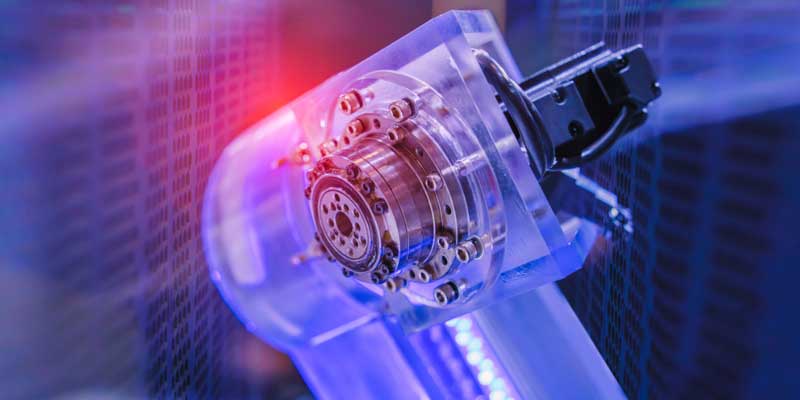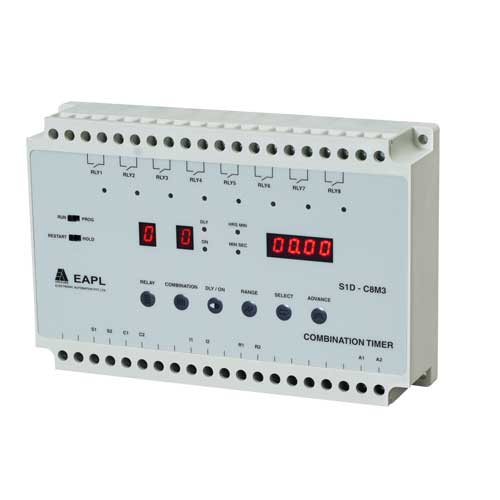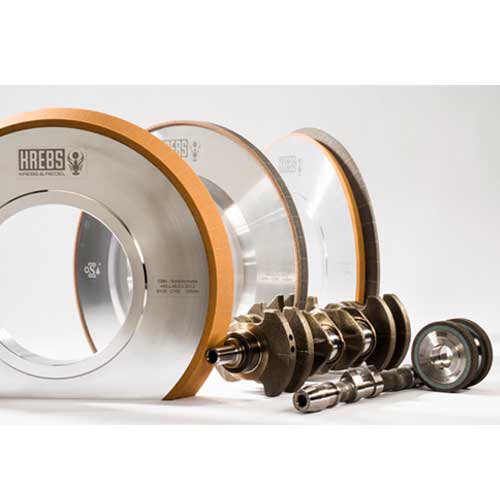Schedule a Call Back
Renewable energy: a big ticket player
 Technical Articles
Technical Articles- Oct 01,16

With wind energy already having crossed several milestones, strong efforts are being made to put more power into the growth of the solar energy sector too.
The direction any industrial sector is set to take becomes evident from the way in which its players move. And as far as India’s renewable energy industry is concerned, there appears to be only one way to go – upwards. This is explained by some of the more recent announcements. Bosch, for example, is set to double its installed capacity in solar energy by end of 2016 and has a forward looking vision of becoming the most reliable and dependable energy partner. Showcasing its key solutions at the Renewable Energy Industry (REI) Expo-2016 in Delhi held in the second week of September, Bosch India’s energy team says it is committed to increasing the scope of its engagement with the customer. “We are offering innovative solutions coupled with other features, such as being unique, cost-effective and environmentally friendly,” says C M Venugopalan, head of Bosch India’s energy business.
By the end of 2016, while aiming to double its capacity in solar energy, Bosch India intends to penetrate key industry sectors contributing to their energy-efficiency measures. “Bosch is going to tap into the enterprise segment and captive consumers by leveraging its technical and engineering design capabilities,” Venugopalan states. This year, the business unit of Bosch Energy and Business Solutions (BEBS) celebrates its third anniversary. This relatively new business division has to its credit some of India’s most technical and complex installations. An example of this would be the installation of the 1MWp (megawatt peak) solar project for Maruti Suzuki Limited in Manesar. This highly referenced engineering project was built on a 10-metre high superstructure over an area utilised for rain water harvesting. Another highly acclaimed project is the commissioning of the 12 MW solar project for Cochin International Airport Limited (CIAL). This project is also the world’s first airport to operate entirely on solar energy.
“We would like to play a very important role in the initiative that India has taken to achieve the 100 GW by 2020 target. India’s solar energy provides a golden opportunity for the country to move towards clean energy. The 175 GW of installed renewable capacity target by 2022 relies primarily on 100 GW of solar and 60 GW of wind. For Bosch this is an opportunity and the business unit is committed to reducing the energy cost of its commercial and industrial customers,” Venugopalan adds.
The Need for Renewable Energy
An installed capacity of over 260 GW notwithstanding, India’s power generation has struggled to keep pace with its rapid economic growth, rise in population, growth and rampant urbanisation. Energy demand has perpetually outstripped supply by a wide margin, and with the 12th Five Year Plan (2012-17) targeting annual GDP growth of 7-8%, a significant increment in energy supply is crucial to match the ever-increasing requirement. This rising energy demand, coupled with less-than-expected improvements in the production of domestic crude oil, natural gas and coal, has led to a strong reliance on imports. India racked up one of the highest energy import bills in 2012-13 (over USD 100 billion), and though the pressure has eased at the moment due to the softening of global crude prices, a long-term solution has become critical.
Consequently, over the past few years, India’s energy security has become a key driving force of its economic policy and the government has taken several steps in this direction. For instance, for the long-term, measures have been taken to diversify the fuel mix, increasing focus on renewable resources in order to reduce reliance on conventional fuels, in particular, coal. Though presently both wind and solar technologies are manufactured in India, the former is better established by far with a capacity of over 10 GW, while solar manufacturing has yet to gain traction with only about 800 MW on offer. This is a function of the relative maturity of each sector – wind deployment preceded that of solar power and hence dominates the market, but it also illustrates other issues such as the global dominance of nations like China which has reshaped the solar PV manufacturing landscape over the past five years.
“India is a key exporter of wind turbines, with a mature manufacturing base that has grown in parallel with the deployment of wind projects in the past decade. This has led to a diverse market of manufacturers who are very cost-competitive due to lower production costs. Important export markets include South America, the USA, Europe and Australia, but there is rapidly increasing domestic demand as well for RE equipment. Several policy levers have propelled the growth of this sector, like the launch of the Jawaharlal Nehru National Solar Mission (JNNSM) in 2010, which helped solar development gain ground. This was further bolstered by several states launching state-specific solar policies featuring a gamut of fiscal and tax incentives to supplement the policy support mechanisms already in place,” is what Sumant Sinha Co-Chair, CII National Committee for Renewable Energy and Founder-Chairman and CEO, ReNew Power Ventures (P) Ltd, had to say during the ‘Make in India’ show held in Mumbai in February this year.
At the moment there are huge investment opportunities in the Indian RE sector. The Union Government, led by Prime Minister Narendra Modi, has made infrastructure growth a national priority and expects this sector, along with manufacturing, to drive the economy in the next five years. In line with this vision, the Ministry of New and Renewable Energy (MNRE) has scaled up renewable targets manifold to about 175 GW by 2022, with solar and wind-based power accounting for over 90% of this volume. “In fact, driven by a conducive policy framework and private sector investments, India’s installed renewable energy capacity has doubled from about 17 GW in December 2010 to over 34 GW today, accounting for 13% of the fuel mix. At present, with over 22 GW, wind power accounts for nearly 65% of the total renewable capacity in the country, followed by small hydro power (4 GW, 11% of the capacity). While solar capacity is trailing considerably behind wind power at about 3 GW, it has witnessed a hockey stick growth in the last four years, increasing ten-fold from a meagre 36 MW in 2010. Given the huge potential, this growth trajectory is expected to be sustained,” Sinha says.
Government Initiatives
Historically, the central government – administered by the MNRE, with funds disbursed through the Indian Renewable Energy Development Agency (IREDA) – has offered two types of incentives for RE – Accelerated Depreciation (AD) and Generation-Based Incentive, besides capital subsidies for biomass and small hydro. In the recently-started Phase II of the JNNSM, a new mechanism – Viability Gap Funding (VGF) – has been created for solar projects. The state regulator-led RE support mechanisms include the Renewable Purchase Obligation (RPO), which states that distribution companies need to procure a certain percentage of electricity from renewables, and feed-in-tariffs. Also, with the government allowing 100% foreign direct investment (FDI) in renewables, the sector witnessed cumulative FDI inflows of over USD 3,000 million from April 2000-March 2014, as per the Department of Industrial Policy and Promotion.
The government is also in the process of putting in place critical policy levers including Amendments to the Electricity Act 2003, whereby stringent penalties will be imposed on defaulters for not complying with renewable purchase obligations. Further, an RE generation obligation (RGO) may be imposed on conventional power generators, and a national RE policy is in the making. Meanwhile, the sharp decline in solar costs from Rs 20 per unit a few years ago to about Rs 5.5 now has made the business proposition for investments in solar exponentially more attractive. The government is also considering graded tariffs to achieve grid parity, provide investors a fair return on investment over the lifecycle of the project, and bring in an entity to provide power purchase assurance to investors.
To ensure the ease of doing business for both global and domestic investors, MNRE is exploring plug-and-play solutions for solar plants by installing 20 GW capacity via solar parks in key states where all approvals, land acquisition and evacuation arrangements will be pre-made for companies wanting to set up shop. Global manufacturing companies can set up base in India, capitalising on its low-cost labour, favourable policies and tax incentives, making the country a hub for the export of RE equipment. Moreover, the business case for investments in RE, particularly for large investors, is very strong given the benefits of AD and strong balance-sheets, which may be leveraged to avail lower interest rates. All this will help take the cost of solar power below Rs 5 – at par with conventional power – thereby completely changing the economics of the energy business.
Further, the MNRE will soon seek approval from the Union Cabinet to scale up the capacity of solar parks in the country to 40,000 MW from 20,000 MW at present. This was announced by New and Renewable Energy Secretary Upendra Tripathy. Reiterating India’s agenda to promote clean energy, Tripathy said the government has raised coal cess eight times, from Rs 50 to Rs 400, in the last two years. “This shows the prime minister’s agenda to save the environment and promote renewable energy,” he said, adding that the country’s association with the International Solar Alliance will also boost India’s plan to scale up its solar capacity.
A Big Window
Speaking on the announcement of the 10th anniversary of Renewable Energy India, Yogesh Mudras, Managing Director, UBM India, said, “India is set for a period of rapid and sustained growth in energy demand and plans to quadruple its renewable power capacity to 175 GW by 2022 as part of the government’s plan to supply electricity to every household. India, home to 18% of the world’s population, uses only 6% of the world’s primary energy. India’s energy consumption has almost doubled since 2000 and the potential for further growth is enormous. Developing a robust ecosystem is the need of the hour and UBM India with REI stands ready to support this vision by serving as an industry catalyst in bringing the technology and the international fraternity, including investors, to India to enable potential projects and set up manufacturing units under the ‘Make in India’ campaign.”
The country is on pace to increase its installed capacity by 127% – the biggest market increase in the world – according to GTM Research. The Indian government plans to install around 40 GW of commercial and industrial roof-mounted installations by 2022, which is further driving the market. All this is also paving the way for foreign companies to take more than a passing interest. “There’s an incredible market opportunity in India for American solar companies, as the country is just starting to realise its solar potential,” says Dr Florian Wessendorf, Managing Director, Solar Promotion International GmbH.
In fact, taking the lead are French companies looking for partnerships in India to contribute to the country’s renewable energy targets through innovative solutions and technology cooperation. “Recently a delegation of French companies visited India to study the scenario in renewable energy. These companies presented their expertise and cutting-edge technologies ranging from solar trackers, water turbines to software for energy information systems,” a French Embassy statement states. The delegation visited the Renewable Energy India Expo and travelled to other places to meet key research and development players in the renewable energy sector, including IISc Bangalore, IIT Bombay, L&T, Tata Power and others.
More Force to Wind Energy
After tasting success in solar energy auctions which helped bring down tariffs, the government is looking to soon start bidding for the wind power sector. According to Power Minister Piyush Goyal, “Over the years, the wind energy players were so used to the feed-in tariffs that they were resisting it on the ground that its distributed all across small units and will therefore not work. But, I realise that the pricing that you get out of these feed-in tariffs is never going to be the most optimal tariff. Fortunately, the success of solar power tariffs has brought solar power prices down by 40% in the last 12 to 17 months. It has become the benchmark for wind power.”
Meanwhile, the Solar Energy Corporation of India (SECI) will float tenders for setting up wind projects with cumulative capacity of 1,000 MW to supply power to non-windy states. “SECI will float tenders for total wind power capacity of 1,000 MW. This will be tariff-based competitive bidding and will be awarded to bidders quoting the lowest price. At present the rate of wind power ranges between Rs 3.9 per unit (lowest in Tamil Nadu) and Rs 5.5 per unit in other states. This bidding may result in drop in prices of wind power as happened in case of solar power,” a senior official said. Wind power deployment in the country started in early 90s. The present wind power installed capacity in the country is nearly 26.7 GW, sharing around 9% of total installed capacity. Globally, India is at the 4th position in terms of wind power installed capacity after China, USA and Germany.
In addition, Swedish company Flowocean AB has expressed interest in setting up floating offshore wind turbines in Gujarat and Tamil Nadu, subject to the approval of state governments. It is also open to exploring possibilities of making components for turbines in the two states under the ‘Make in India’ initiative, according to a press release from Flowocean. The company is also working on concrete proposals for investments in India. According to Jagat Shah, representative of Flowocean in India, with India having a coastline of 7,600 km, the potential for offshore wind turbines is high. Solar power systems and onshore wind power require vast areas, which is not the case for offshore wind power. However, offshore wind energy systems are expensive. Flowocean has introduced a floating wind power solution that costs just half of the current offshore wind power systems.
- HUNED CONTRACTOR
Big Steps in Renewable Energy
ABB India, a power and automation technology company inaugurated a new solar inverter manufacturing facility at Nelamanagala in Bengaluru. The facility is set to double the solar inverter manufacturing capacity of the company to 2 GW in a span of five months.
Tata Power’s total generation capacity through wind farms increased 9% to 9,432 MW in the April-June quarter compared with the same quarter last year, boosted by a fresh addition of 273 MW wind power. The growth in wind power generation was due to commissioning of 44 MW Lahori wind farm project in Madhya Pradesh and Cennergi, its 50:50 African joint venture. Suzlon Group, one of the world’s leading wind turbine manufacturers, has won an order for building a 197.40 MW wind project in Andhra Pradesh. The financial details of the project were not revealed, but the company said this is not the first contract it has won from the customer.
Inox Wind Ltd has started production at its 800 MW wind turbine blade facility at Barwani district in Madhya Pradesh. The unit will have an annual production capacity of 400 rotor blade sets and eventually also have an annual manufacturing capacity of 400 nacelles and hubs, 300 towers and will double Inox Wind’s production capacity.
India’s leading stock exchange National Stock Exchange of India Ltd installed a 6.25 MW wind power project at Satara in Maharashtra. Up to 65% of the energy consumption of the NSE office located in Mumbai will be met by this wind project. The project was implemented by Suzlon Group.
Related Stories

Revolutionising HVAC efficiency with renewable energy and low-carbon materials
HVAC systems, crucial for maintaining indoor comfort, have long relied on fossil fuels, raising concerns about environmental impact and energy efficiency. Even so, a transformative moment, aptly cal..
Read more
Boehlerit: Know-how in cutting of tubes
In order to cover the different machining steps, Boehlerit has, over the decades, as the industry’s leading tool supplier, created the market’s most comprehensive product range, now also includi..
Read more
Increasing automation drives servo motors demand
The market for servo motors was significantly influenced by the growing use of automation across a number of industries, including manufacturing, automotive, electronics, and packaging, says Adroit ..
Read moreRelated Products

Combination Timers
Electronic Automation Pvt Ltd offers a wide range of combination timers.

Cbn and Diamond Tools
Krebs & Riedel Abrasives India Pvt Ltd offers a wide
range of CBN and diamond tools.

Connectors
G R Enterprises offers a wide range of connectors.











